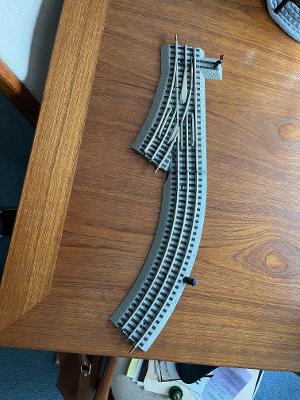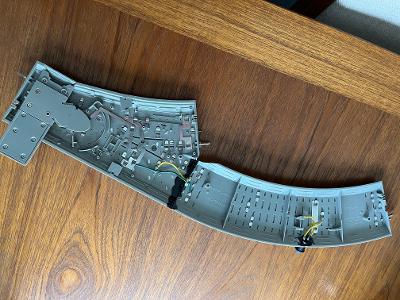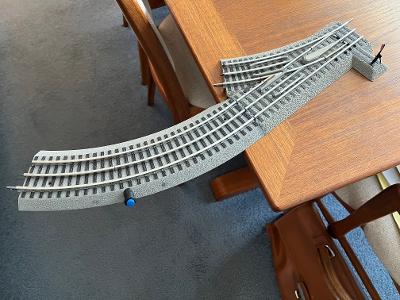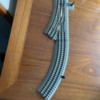Ok - let me explain.
In order to add two small sidings in a confined space to the existing layout and maintain the correct geometry and curvature of the existing main line, I had to cut the "through end" of an FT switch back by about 1.5". You'll have to trust me - there was no other way to do it and still be able to fit the two sidings into the confined space.
Because of the configuration of the switch, there's also no easy way to insert new pins into the cut rails. That means that the pins and the plastic nubs of the connecting FT piece also had to be cut flush in order to meet the cut end of the switch - sort of like you would have where the track on a lift-out connects to a main line.
The difference is that I don't need to leave a gap at the ends to lift one track out - hence, the question about the best adhesive to use to connect them together.
The cut end of the switch has no bulkhead - it's just the thin curvature cross-section of the track - so a binder clip will not work - there's nothing for it to grab onto at the switch end.
Because there's no pins and the connecting track and sidings will be getting power through the switch, I've already soldered wires from the switch to the connecting piece of track, so they are already physically connected to each other by wires, but not solidly.
I intend on drilling new holes into both the switch and the connecting track to anchor them to the layout, but also wanted to try and glue them together as one piece, if possible.
I tried regular JB Weld (the black and white mix), but it did not create a strong enough bond - thus, my question.











